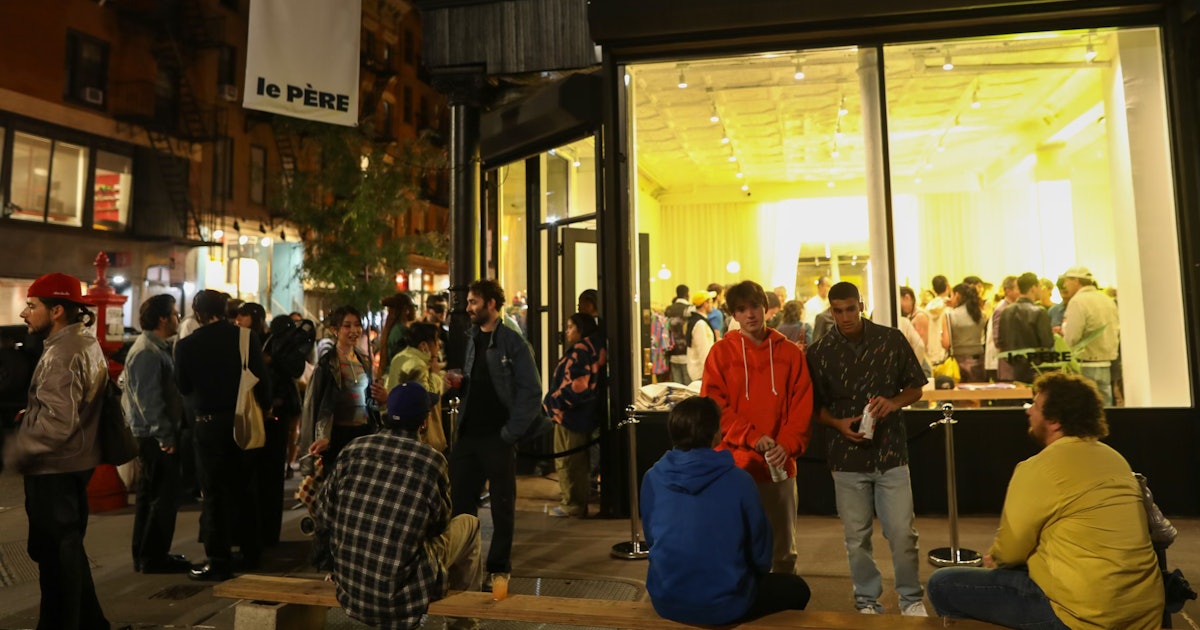One night late last month, fans stood in line down a Lower East Side block to see Gus Dapperton perform. Inside, Dapperton and his band put on an energetic show, during which they wove between changing rooms and sang into mirrors as 150 concertgoers packed in, spilling into the clothing racks. The gig, as you might’ve guessed, wasn’t a at a music hall or club, but rather at the le PÈRE store on Orchard Street, which has hosted everything from wine and cheese nights to panels after opening in October.
As emerging brands like le PÈRE break into the physical space, some are selling clothes by day and hosting events by night, in part as a financial consideration: Brick-and-mortar retailers continue to disappear, so it pays to operate as a venue after the “closed” sign goes up. For le PÈRE, the weekly events have unfolded organically. Brand director and co-founder Abhi Janamanchi, who has a background in music, says he always intended for the property to be used all day. He reached out to potential collaborators after the opening, he says, but is now fielding more and more requests from those looking for a central venue with a flexible layout.
“There was this opportunity to recapture an ethos I think used to exist a lot more in New York, where shops were hubs for friends groups and larger scenes to exist,” he says. “So like-minded people can come in here and know that whatever is happening will probably be of interest.”
Similarly, Imani Randolph, brand and community manager at Ganni, says IRL activations are crucial to building and engaging with the label’s fanbase — and they’re usually cozier than hosting at another venue. “It’s nice when a store party ends up feeling like a house party,” she says, like when Ganni recently welcomed 60 guests to their Bleecker Street location to unveil their collaboration with Ella Emhoff. They’ve previously put on events with up to 80 attendees to celebrate partnerships with Mylo, Nguyen Inc, and Ahluwalia.
The one major downside of a store party is the chance of guests pocketing or damaging the product. le PÈRE has only lost one scarf after five jam-packed months, but Janamanchi says it makes his day “when people go through the books we’ve put out, take time to go through the clothes, and actually interact with the space,” he says. Of course it doesn’t hurt that this often leads to mid-party purchases, Janamanchi says.
Otherwise, the recipe for a successful in-store event, Randolph says, includes a DJ or a great playlist; drinks (from a bar or a low-key bucket of cans like Waves, Ghia, and Canetta); something sweet; and “simple but stunning” floral arrangements of in-season blooms. When it all comes together, Randolph says she likes to take a moment to look around at their community enjoying themselves — something that makes the cleanup for the next day of business entirely worth it.




